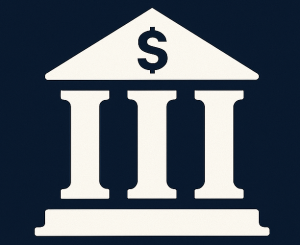The Web3 Rollercoaster: From Hype to… What Now?
Honestly, remembering the initial Web3 buzz feels like a lifetime ago. You couldn’t escape it. Every tech blog, every podcast, every self-proclaimed guru was shouting about decentralization, NFTs, and the metaverse. It felt like the internet was about to completely transform overnight. Remember those crazy NFT prices? People were throwing money at digital JPEGs like they were going out of style. And, well, maybe they kind of did. It’s easy to look back and laugh, but at the time, it felt like missing out on the next big thing. I even bought a couple myself, thinking, “Hey, why not?” Let’s just say they’re not exactly appreciating in value these days. Ouch.
Then, the inevitable happened. The market tanked. Projects crumbled. Suddenly, Web3 wasn’t the future; it was a punchline. Was I the only one who felt like they’d been duped? Probably not. The question on everyone’s mind (and still is) is: Was Web3 a complete failure, or just a necessary growing pain? I mean, did we all get a bit ahead of ourselves? Looking back, the whole thing feels a little bit like the dot-com bubble burst all over again. History tends to repeat itself, doesn’t it?
The Challenges Web3 Still Faces (And They’re Big)
Okay, so the hype died down. But that doesn’t necessarily mean Web3 is dead. It just means it has to, you know, *actually* work and prove its value. The problem is, there are still some pretty major hurdles to overcome. For starters, complexity. Let’s be real, trying to explain Web3 to someone who isn’t already immersed in the tech world is like trying to teach a cat calculus. It’s confusing, jargon-heavy, and frankly, intimidating.
Then there’s the issue of scalability. A lot of the underlying blockchain technology just isn’t ready to handle the kind of traffic that a truly mainstream application would generate. Transactions are slow, fees are high, and the whole thing can feel clunky and inefficient. And don’t even get me started on security. We’ve seen countless examples of hacks, scams, and exploits that have shaken people’s confidence in the whole ecosystem. Ugh, what a mess! Seriously, all the promise in the world doesn’t matter if your money can disappear overnight because of some coding error. And, honestly, the user experience? It’s often terrible. Remember trying to set up your first crypto wallet? I do. I spent a whole afternoon wrestling with Metamask and almost threw my computer out the window. I finally managed to get it up and running after staying up til 2 am reading everything I could find online.
Finding Real-World Use Cases Beyond the Hype
So, if Web3 isn’t about overpriced JPEGs and promises of overnight riches, what *is* it about? This is where things get interesting. Because beneath all the hype, there are actually some pretty compelling use cases emerging. Think about decentralized finance (DeFi), which aims to create a more open and accessible financial system. Or supply chain management, where blockchain can be used to track goods and prevent fraud. Or even digital identity, where individuals have more control over their own data.
These are all real-world problems that Web3 technology could potentially solve. The key, I think, is focusing on these practical applications and less on the speculative frenzy that characterized the early days. It’s about building tools that people actually want to use, not just shiny objects that generate buzz. It’s kind of like the early days of the internet itself. Before the social media boom, it was clunky, hard to navigate, and full of… well, let’s just say less-than-savory characters. But it persisted, and eventually blossomed.
Is This a Blip or a Complete Reset?
That’s the million-dollar question, isn’t it? Is this current downturn just a temporary setback, or is it a sign that the whole Web3 experiment is fundamentally flawed? I honestly don’t know. And I don’t think anyone really does. But here’s what I *do* know: the underlying ideas behind Web3 – decentralization, transparency, user ownership – are still incredibly powerful.
The internet as we know it is dominated by a handful of massive corporations that control our data, our content, and our online experiences. There’s a growing sense that this isn’t sustainable, and that we need a more democratic and equitable online environment. Web3, at its core, offers a vision of that future. Whether it can actually deliver on that vision remains to be seen. What is apparent is that people aren’t so ready to throw money at just anything anymore. They’re looking for actual results.
What Does the Future of Web3 Actually Look Like?
Okay, so let’s say Web3 *does* have a future. What might that future look like? I think we’re likely to see a more pragmatic and less hyped-up approach. Less talk about moonshots and more focus on solving real-world problems. We’ll probably see more regulation, which, while it might stifle innovation in some ways, could also help to legitimize the space and protect consumers.
We’ll also need better infrastructure, easier-to-use tools, and a greater emphasis on security. And, perhaps most importantly, we’ll need to find ways to bridge the gap between the Web3 world and the traditional internet. Because, let’s face it, most people aren’t going to abandon their favorite apps and websites overnight to embrace some new, decentralized alternative. So, it’s a tough climb, but the potential payoff of a more decentralized and user-controlled internet is still worth pursuing. Was I too hopeful in 2021? Probably. But I’m still willing to give it another shot.
Web3’s Second Act: What to Watch For
So, if you’re like me and still cautiously optimistic about Web3, what should you be paying attention to? Keep an eye on the development of Layer 2 scaling solutions, which aim to make blockchain transactions faster and cheaper. Watch for progress in the areas of decentralized identity and data privacy. And pay attention to the companies and projects that are building real-world applications, not just chasing hype.
Don’t be afraid to experiment, but also be careful. The Web3 space is still evolving, and there are plenty of risks involved. Do your own research, don’t invest more than you can afford to lose, and be wary of anything that sounds too good to be true. Ultimately, the future of Web3 will depend on whether it can deliver on its promises of decentralization, transparency, and user empowerment. And that’s something we’ll all have to wait and see. If you’re as curious as I was, you might want to dig into the current state of DeFi projects; it’s definitely a space to watch. Funny thing is, it might take another five or ten years before we really know if any of this stuff is going to stick. Who even knows what’s next?














